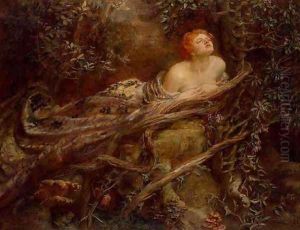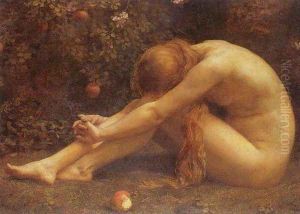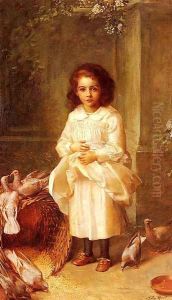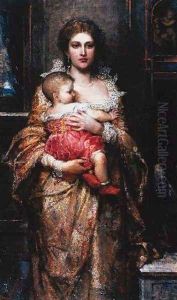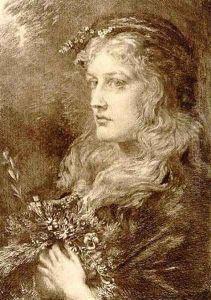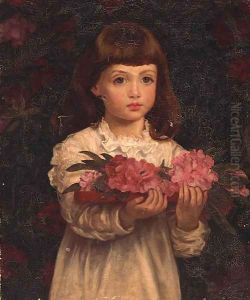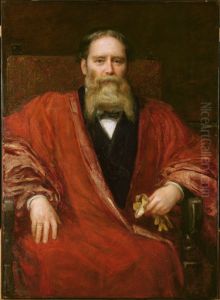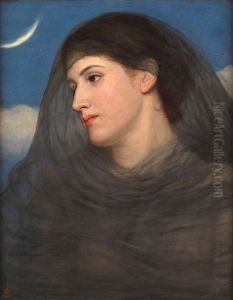Anna Lea Merritt Paintings
Anna Lea Merritt was an American painter born on September 13, 1844, in Philadelphia, Pennsylvania. She was known for her portraits, landscapes, and religious paintings. Following her artistic inclinations, she moved to Europe, as it was the center of the art world at that time, and settled in England, which became her home for the majority of her life.
Merritt received her artistic training in Europe and benefited from the mentorship of influential artists such as Heinrich Hoffmann and the Pre-Raphaelite painter Dante Gabriel Rossetti. During her time in Europe, she also met her future husband, the painter and art critic Henry Merritt, who was significantly involved in her artistic development. However, their marriage was tragically short-lived as Henry died just three months after their wedding in 1877.
Widowed and motivated by her passion for art, Anna Lea Merritt continued to paint and achieved considerable success in her lifetime, which was quite rare for a woman artist in the 19th century. Her most famous work is 'Love Locked Out' (1889), which was created in memory of her husband. The painting was intended to depict love persisting beyond the grave, and it was so well-received that it was purchased by the Tate Gallery in 1890, making it the first painting by a woman artist acquired by that institution.
Throughout her career, Merritt exhibited at various prestigious venues, including the Royal Academy of Arts in London. Despite facing the societal challenges of being a female artist in a male-dominated profession, she was able to sustain herself financially through her art—a significant achievement for any artist, especially a woman at that time.
Merritt was also vocal about the difficulties faced by women in the art world, including the lack of access to professional training and the prejudice they encountered when attempting to sell their work. She continued to paint well into her later years, with her work evolving over time. Her style incorporated elements of realism as well as an emotional depth that resonated with her subjects.
Anna Lea Merritt passed away on April 7, 1930, in Hurstbourne Tarrant, Hampshire, England. She left behind a legacy of resilience and dedication to art that continues to inspire. Merritt's work is now recognized for its technical skill and emotional intensity, and her life serves as an important example of the challenges and achievements of female artists in the 19th and early 20th centuries.
